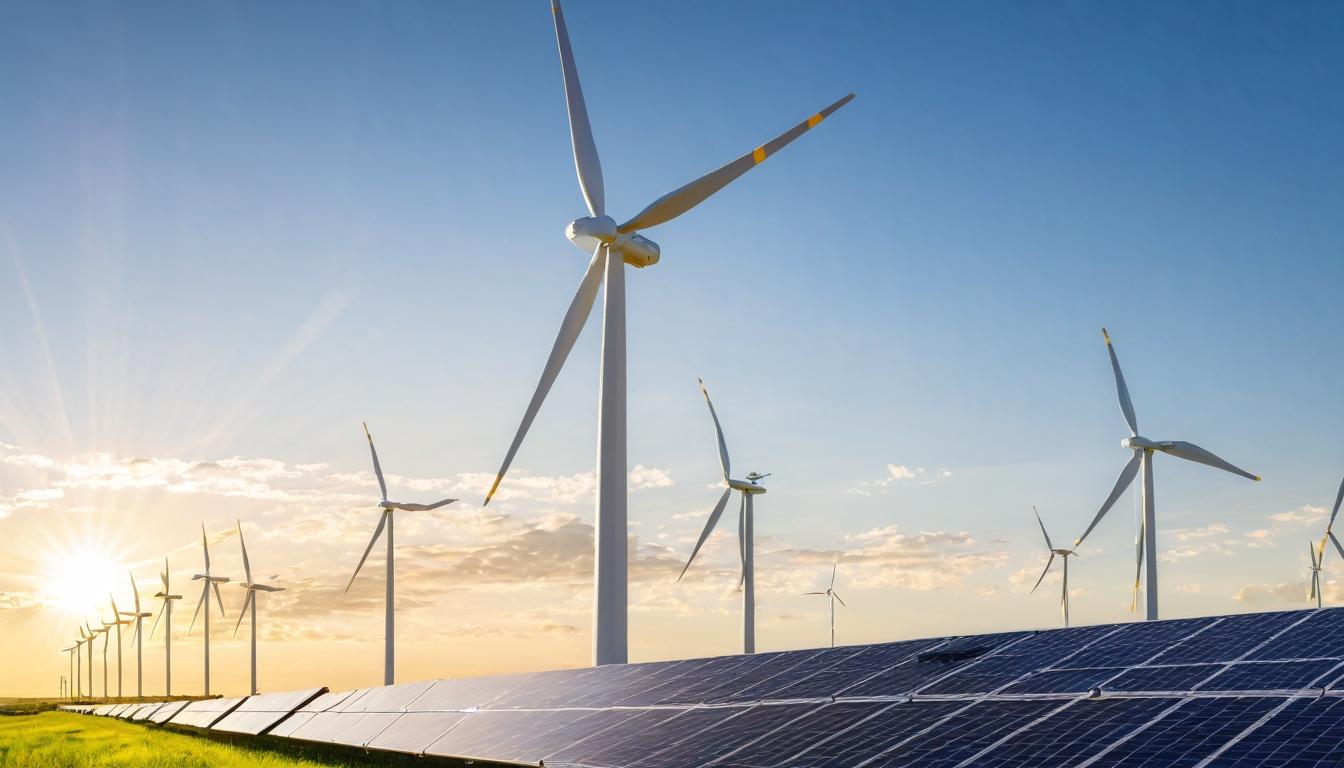They call it the quiet revolution, but you can hear it if you listen closely—in the hum of new transmission lines stretching across forgotten landscapes, in the silent efficiency of grid-scale batteries soaking up solar power, and in the boardrooms where utility executives are quietly rewriting century-old business models. This isn't the flashy solar panel on your neighbor's roof or the wind turbine you spot during a road trip. This is the invisible infrastructure revolution happening behind the scenes, and it's reshaping how America powers itself in ways most people never see.
Across the country, a massive transmission buildout is underway that would make Eisenhower's interstate highway system look modest by comparison. The Department of Energy recently identified 10 national transmission corridors that could unlock renewable energy potential equivalent to powering 60 million homes. These aren't just power lines—they're energy superhighways connecting sun-drenched deserts with cloudy cities, wind-rich plains with manufacturing hubs. The projects have names that sound like something from a sci-fi novel: SOO Green, TransWest Express, Grain Belt Express. But the reality is far more complex than the names suggest.
What makes this transmission revolution particularly fascinating isn't the technology itself—we've been stringing wires between poles for over a century—but the financial and regulatory gymnastics required to make it happen. Private developers are partnering with utilities, states are forming regional compacts, and farmers who once fought power lines are now leasing corridors through their fields. The economics have shifted so dramatically that what was once unthinkable is now inevitable. The real story isn't in the steel towers but in the spreadsheets and courtrooms where these projects are being born.
Meanwhile, something equally transformative is happening at the distribution level. Utilities are deploying advanced sensors, smart switches, and AI-powered management systems that make the grid behave more like a living organism than a static network. These digital upgrades allow utilities to reroute power around outages before customers even notice, balance loads with unprecedented precision, and integrate distributed energy resources in ways that were theoretical just five years ago. The result is a grid that's not just stronger but smarter—capable of anticipating problems rather than just reacting to them.
Perhaps the most underreported story in energy today involves what's happening inside utility boardrooms. The traditional business model—build power plants, string wires, collect regulated returns—is being turned inside out. Utilities are becoming platform operators, managing networks of third-party resources rather than just owning assets themselves. They're experimenting with performance-based regulation that rewards reliability and efficiency rather than capital expenditure. Some are even exploring subscription models that would make your electricity bill look more like your Netflix account.
Then there's the storage revolution that's quietly changing the fundamental nature of how we think about electricity. Grid-scale batteries are no longer exotic experiments—they're becoming standard equipment for new solar and wind projects. The economics have reached a tipping point where it often makes more sense to build solar-plus-storage than to build a natural gas peaker plant. These battery systems aren't just backup power—they're reshaping wholesale electricity markets, providing services that didn't exist a decade ago, and creating new revenue streams that are attracting investment from unexpected quarters.
What's particularly striking about these developments is how they're converging. The transmission buildout enables renewable development, which drives storage deployment, which supports grid modernization, which creates new utility business models. It's a virtuous cycle that's gaining momentum even as political debates about energy dominate headlines. The real action isn't in the shouting matches but in the quiet progress happening across the country.
The human stories behind this transformation are equally compelling. There are engineers developing new battery chemistries in forgotten industrial towns, lawyers negotiating right-of-way agreements across multiple states, and community organizers helping neighborhoods benefit from the clean energy transition. These aren't the celebrities of the energy world, but they're the ones actually building the future while everyone else is talking about it.
As I traveled across several states researching this story, I kept encountering the same pattern: local officials who initially resisted renewable projects becoming their biggest champions after seeing the economic benefits, utility workers who've spent their careers maintaining old systems now training on cutting-edge technology, and communities that were once energy-poor now positioned to become energy exporters. The transformation isn't just technological—it's cultural, economic, and deeply personal.
The challenges remain substantial, of course. Permitting delays, supply chain constraints, and workforce shortages threaten to slow progress. But what's remarkable is how these obstacles are being overcome through innovation and collaboration. Utilities that were once fierce competitors are now sharing best practices. Technology companies that never thought about energy are becoming major players. And communities that felt left behind are finding new opportunities.
This invisible revolution won't make many front pages, but it's arguably more important than any single policy announcement or technological breakthrough. It's the gradual, systematic rebuilding of America's energy foundation—one transmission line, one smart inverter, one regulatory reform at a time. The result will be a system that's not just cleaner but more resilient, more equitable, and more adaptable than anything we've known before. The energy transition isn't coming—it's already here, hiding in plain sight.
The invisible revolution transforming America's energy landscape

